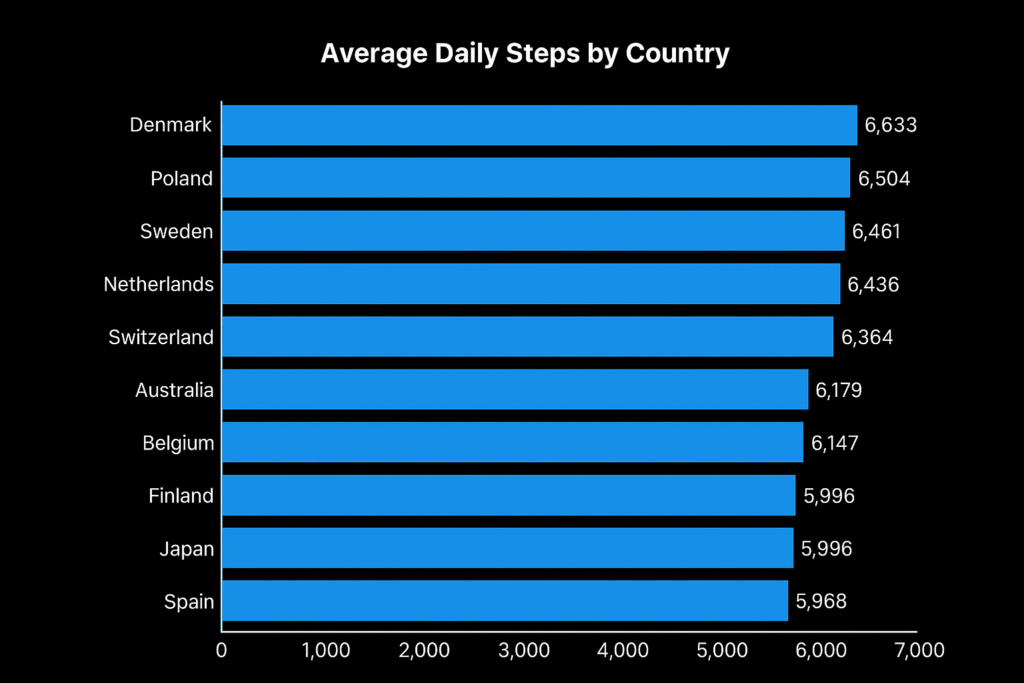Every runner dreams of covering more miles, boosting stamina, and finishing strong without battling fatigue or injury. Yet, despite countless hours spent on the track or treadmill, many still struggle with recurring knee pain and declining endurance over time, a challenge that highlights the importance of building true Strength for Runners.
The reason often lies in something not immediately obvious: a weak core. The core is more than just your abs; it includes muscles in your pelvis, hips, and lower back that stabilize every stride. Without a strong and stable midsection, the body struggles to maintain proper running form, leading to energy waste, imbalance, and increased stress on the knees.
So before adding more miles to your training plan, it’s time to strengthen your foundation. The insights below explore Strength for Runners: Core Training Tips To Boost Stamina And Prevent Knee Pain, a holistic guide to building endurance, improving posture, and preventing common injuries.
Core Strength for Runners: The Hidden Power Source Behind Speed and Stability
Many runners mistakenly believe that running injuries are only solved by stretching or changing shoes. In reality, the foundation of a stable, powerful stride lies in the center of your body: your core. A strong, balanced core acts as a kinetic stabilizer, ensuring that the force generated by your legs is not lost to unnecessary movement.
The full guide to developing strength for runners begins by addressing core integrity. Weakness in the deep abdominal or hip muscles causes what are known as “energy leaks.” Instead of moving forward efficiently, your body compensates. This compensatory movement often results in the hips dropping, the pelvis tilting, and, crucially, the knees collapsing inward. This is the root cause of most running-related discomfort and a huge drain on your stamina.
The Anatomy of a Runner’s Core
To effectively train your core, you must understand its role as a complex, three-dimensional cylinder, not just the “six-pack” muscles.
- Transverse Abdominis (TVA):
This deep, corset-like muscle wraps around your trunk and is the primary stabilizer. When activated, it braces your spine against impact, preventing excessive sway or arching. - Obliques (Internal and External):
Located on the sides of your waist, these muscles are crucial for resisting rotational forces. During running, as your opposite arm and leg swing, the obliques prevent your torso from twisting excessively, keeping your forward momentum clean and efficient. - Gluteal Muscles (Maximus, Medius, Minimus):
While often considered leg muscles, the glutes are part of the core’s “powerhouse.” The gluteus medius, in particular, stabilizes your pelvis in the frontal plane, preventing the opposite hip from dropping (the dreaded “runner’s waddle”) when you land on one leg.
Steps Around the World: A Glimpse Into Runner Activity
Before diving deeper into core training, it’s fascinating to look at how different countries stack up in terms of daily movement.
According to PureGym’s global step report, Northern European nations lead the way in average daily steps, a sign of active lifestyles and naturally stronger lower-body endurance.
Average Daily Steps by Country

Top Performers: Denmark, Poland, and Sweden record significantly higher step averages than the global mean, over 10% more, reflecting consistent daily movement that supports endurance, strength, and core stability.
Strength for Runners: Core Training Tips To Boost Stamina And Prevent Knee Pain
A dedicated core routine is not about aesthetic six-packs; it’s about functional stability. By integrating core work, you teach your body to maintain perfect posture even as fatigue sets in at mile 15, directly boosting stamina and preventing the misalignment that leads to joint damage.
Essential Core Exercises for Runners
Below are the top evidence-backed exercises that every runner should incorporate into their weekly training plan. These moves target key stabilizing muscles responsible for alignment, power, and protection from knee strain.
1. Plank Variations
Start with the classic forearm plank and build up to side and dynamic planks.
Benefits: Builds endurance in the rectus abdominis, transverse abdominis, and obliques, critical for maintaining posture through fatigue.
2. Glute Bridge
Lie on your back, bend your knees, and lift your hips while tightening your core and glutes.
Benefits: Strengthens glutes and hamstrings while correcting hip imbalances that cause knee pain.
3. Dead Bug
Lie on your back, raise your legs and arms, then lower opposite limbs simultaneously.
Benefits: Enhances core coordination and pelvic stability, ideal for reducing lower-back and knee tension.
4. Russian Twists
Sit with your legs raised slightly and twist your torso side-to-side while holding a weight.
Benefits: Improves rotational control, helping with turns, uneven terrain, and sprint stability.
5. Bird Dog
From a tabletop position, extend one arm and the opposite leg.
Benefits: Activates the entire kinetic chain and enhances balance between core and lower body.
6. Mountain Climbers
Perform rapid knee drives in a plank position.
Benefits: Combines cardio and strength, boosting endurance and dynamic stability.
For a guided weekly schedule and demonstrations of these exercises, visit Strength for Runners, where you can find form corrections, progressions, and tailored training tips.
Preventing “Runner’s Knee” Through Targeted Strength
Knee pain, or patellofemoral pain syndrome, is a collective term for discomfort around the kneecap. It’s rarely the knee’s fault; instead, it is often a victim of instability originating from the hip and thigh muscles. The solution is strengthening the muscles that support and guide the knee joint.
The Kinetic Chain: Why Weak Hips Cause Knee Pain
Running involves a chain of events from your foot strike to your head. If any link in this chain is weak, most often the glutes the stress is transferred down to the next weakest joint, which is typically the knee. For example, a weak gluteus medius allows the femur (thigh bone) to rotate internally, pulling the kneecap off its natural track and leading to inflammation and pain.
The true secret to achieving Strength for Runners: Core Training Tips To Boost Stamina And Prevent Knee Pain is to train the glutes, hamstrings, and quads to absorb impact and keep the kneecap tracking smoothly.
Key Knee-Supporting Strength Movements: Form & Progression
1. Glute Bridges (Single-Leg Progression)
- How: Lie on your back, knees bent. Lift your hips until your body forms a straight line from shoulder to knee. For progression, extend one leg and lift using the grounded heel.
- Tip: Focus on squeezing your glutes before you lift your hips. Don’t push through your lower back.
- Progression: Hold a dumbbell across your hips for added resistance.
2. Bodyweight Squats & Wall Sits (Quad Endurance)
- How: Stand with feet shoulder-width apart. Push your hips back as if sitting in a chair, keeping your chest up and back straight.
- Tip: Ensure your knees track directly over your feet; they should never collapse inward. Use a wall sit (90-degree bend) to build static quad endurance.
- Progression: Switch to Single-Leg Pistol Squats (using support) or add a goblet-hold dumbbell.
3. Lateral Band Walks (Hip Stability)
- How: Place a resistance band around your ankles or knees. Get into a slight quarter-squat position. Step sideways, keeping tension on the band and maintaining the squat.
- Tip: This is not about speed. Keep the steps small and controlled, focusing on the deep burn in the sides of your hips.
- Progression: Use a heavier band or move the band down to your ankles for greater leverage.
4. Romanian Deadlifts (Hamstring & Posterior Chain)
- How: Holding light dumbbells, hinge at the hips, keeping a slight bend in your knees, and a flat back.
- Tip: The movement is driven by pushing your hips back, not by letting your shoulders drop forward. This is a hamstring stretch with weight.
- Progression: Switch to Single-Leg RDLs to integrate stability and greatly increase the glute demand.
Integrating Strength for Maximum Gains: The Runner’s Training Week
Strength training doesn’t need to replace your runs; it should complement them. The goal is to maximize the adaptive response (muscle growth and resilience) without causing excessive fatigue that hinders your key running sessions. Proper periodization the strategic planning of training phases is essential.
| Running Phase | Strength Focus | Goal & Frequency |
| Base Building (8-12 weeks) | Hypertrophy & Max Strength | Build resilient muscle mass. 3 sessions/week. Use heavier weights (6-10 reps). |
| Peak Mileage (4-8 weeks) | Strength Endurance | Maintain strength with less volume/weight to prioritize recovery. 2 sessions/week. Use lighter weights (12-15 reps). |
| Taper/Race Week | Maintenance/Activation | Keep muscles firing without fatigue. 1-2 light sessions/week. Focus on bodyweight core and mobility only. |
Sample Intermediate Training Week
| Day | Running Focus | Duration | Strength & Core Focus |
| Monday | Core + Easy Run | 30 minutes | Include planks, bridges, and a light jog |
| Tuesday | Quality Run (Intervals/Tempo) | 45 minutes | Add mountain climbers, dead bugs |
| Wednesday | Easy Run (Recovery Pace) | _ | Focus on stretching and recovery |
| Thursday | Medium-Long Run | 30-40 minutes | Include side planks and bird dogs |
| Friday | Rest | 40-45 minutes | Glute bridges, resistance band work |
| Saturday | Quality Run (Intervals/Tempo) | 45 minutes | Add mountain climbers, dead bugs |
| Sunday | Long Run | _ | Foam rolling or swimming |
This schedule strategically separates your key intensity days (Tuesday run, Monday strength) to allow for full recovery.
Beyond the Workout: Fueling and Recovery for Lasting Strength
Building strength for runners doesn’t stop once the weights hit the ground. The real transformation happens afterward during recovery. That’s when your body repairs the tiny tears caused by training, turning them into stronger, more durable muscle fibers that carry you further with less fatigue.
Nutrition Strategies to Power Core and Running Strength
1. Prioritize Protein:
Protein is your body’s repair crew. It rebuilds muscle fibers and enhances strength. Choose lean meats, eggs, beans, or Greek yogurt to meet your daily needs.
2. Stay Hydrated:
Even slight dehydration can weaken muscles and increase the risk of injury. Keep water and electrolytes balanced throughout the day, and your joints and endurance will thank you.
3. Add Healthy Fats:
Omega-3 fatty acids from salmon, chia seeds, and walnuts reduce inflammation and support joint health, keeping you light and pain-free on your runs.
4. Don’t Fear Carbs:
Carbohydrates are a runner’s fuel. Go for whole grains, fruits, and starchy vegetables to sustain long-distance energy without the crash.
5. Supplement Smartly:
Support your performance with key nutrients like magnesium for muscle recovery and vitamin D for bone strength and mobility.
A well-rounded diet supports every part of your strength for runners journey, fueling each stride, each lift, and each recovery phase.
The Power of Protein and Sleep: Your Recovery Duo
Protein Timing:
To maximize gains from your Strength for Runners: Core Training Tips To Boost Stamina And Prevent Knee Pain program, aim for 20–30 grams of protein within an hour of your run or strength workout. This post-exercise window is when your muscles are most receptive to repair and growth.
Sleep for Strength:
Sleep isn’t just rest; it’s recovery in action. Deep sleep triggers the release of human growth hormone (HGH), which helps rebuild muscle and repair tissue. For runners, 7–9 hours of quality sleep can mean the difference between feeling sluggish and setting a new personal record.
Essential Tools for Mobility and Recovery
Consistent recovery work ensures your strengthened muscles remain flexible and functional: preventing stiffness and overuse injuries.
| Tool | Technique | Runner’s Benefit |
| Foam Roller | Apply pressure to tight areas (glutes, calves, quads, IT band) for 30–60 seconds. | Reduces soreness, improves circulation, and speeds up recovery. |
| Massage or Lacrosse Ball | Target smaller trigger points (piriformis, deep glutes, arches). | Releases deep knots that rolling can’t reach, easing tension that affects knee alignment. |
| Resistance Bands | Use for pre-run activation drills (clamshells, hip circles). | Engages stabilizing muscles and prevents form collapse during runs. |
By investing time in recovery, you’re not just training harder: you’re training smarter. Each rest day builds longevity and keeps your performance curve moving upward.
Mental Endurance: The Core–Mind Connection
A strong core doesn’t just stabilize your body; it stabilizes your focus. When fatigue sets in, good posture and control help maintain your rhythm and confidence.
Core workouts develop discipline, balance, and control, which translate directly into race-day consistency. Over time, this connection between body and mind helps you push through discomfort, stay focused under pressure, and finish stronger than you started.
Conclusion:
In the end, true running performance isn’t built only on miles or speed; it’s built on stability, control, and strength from within. Your core is the engine that powers every stride, supports your knees, and keeps fatigue at bay. By following these Strength for Runners: Core Training Tips To Boost Stamina And Prevent Knee Pain, you’re not just training for faster times; you’re investing in long-term resilience and injury prevention.
Whether it’s refining your form, integrating mobility work, or fueling your body for recovery, consistency is what transforms average runners into strong, enduring athletes. Combine mindful strength training with balanced nutrition, proper rest, and mental focus, and you’ll unlock the hidden potential that lies at the center of every powerful runner your core.
FAQs:
Q1: Should I lift heavy or use high reps?
A: It depends on your training phase (see table above). Lifting heavier weights with lower reps (6-10) during the Base Building Phase is crucial to build absolute strength and tissue resilience. As you enter Peak Mileage, switch to lighter weights and higher reps (12-15) to focus on muscle endurance and maintenance, prioritizing recovery for your hard runs.
Q2: When is the best time to schedule strength training?
A: Ideally, perform strength training on rest days or days that feature an easy, low-intensity run. Never schedule a heavy strength session immediately before or after a quality run (like intervals or a long run). If you must run and lift on the same day, separate them by at least 6-8 hours, doing the run first.
Q3: Will strength training make me bulky or slow?
A: No. The type of functional strength training recommended here, focusing on compound movements, single-leg stability, and core resiliency, is designed to make you more efficient, not bulky. The low frequency (2-3 times per week) and focus on glutes/hamstrings will prevent excessive muscle mass gain while improving your power-to-weight ratio, which actually makes you faster.
Q4: How quickly will I see results in my running?
A: You will likely feel a difference in your running form and fatigue resistance within 4-6 weeks of consistent strength work. Injury prevention benefits, such as a reduction in knee or hip pain, often become noticeable within 8-12 weeks as your stabilizing muscles become strong enough to support your mileage. Consistency is key!

















